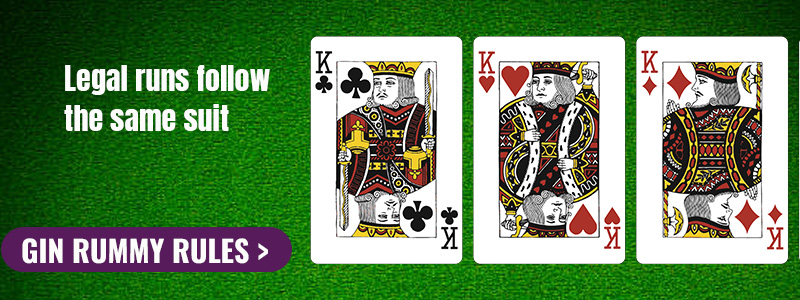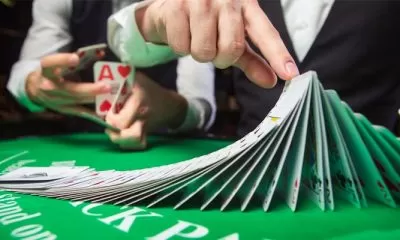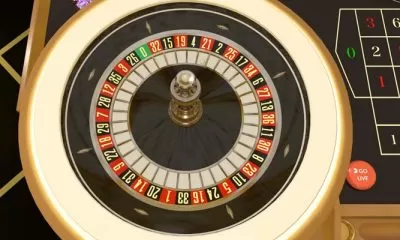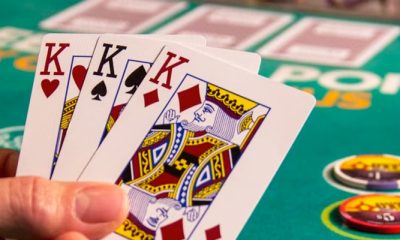Casino
How to Play Gin Rummy: A Simple and Easy Card Game Instruction
Published
6 months agoon
By
Sam Jonson
Card games have always been pretty fun, from regular rummy to poker and even crazy eights, for their incredible need for quick thinking and strategic play. But one game that has stayed pretty popular in this genre is Gin Rummy. Gin Rummy is an extremely popular two-person card game played in social settings. With its roots and history going back to the early to mid-20th century, the card game can be said to have enjoyed incredible popularity for almost an entire century, even enjoying a huge crowd of interested populace in the contemporary setting. Similar to Knock Rummy, the incredible use of strategic thinking makes this a great solution for those looking to stimulate their minds as well.
While the popularity has remained intact, the rules and score counting methods of this card game have certainly evolved over time, making this modern Rummy game very interesting to play. So, if you are looking to spend a fun time with your friends playing card game Gin Rummy, then here is everything that you need to know.
Understanding the Basics of the Game
To beginners and amateurs, the game may seem a little complex at first. However, the actual rules are quite simple and you can fully grasp how to play Gin Rummy in no time. And to understand these rules, the first thing you need to understand is the objective of the game.
The primary Gin Rummy goals are to form valid sets of cards and then reduce the value of your unmatched cards, bringing it as close to 0 as possible. This can be done in runs or groups, where a run refers to 3 or more consecutive cards of the same suit and a group refers to 3 or four cards bearing the same number but belonging to different suits. The player who is able to minimize the most number of unmatched cards in their set wins the game. This means that the player who has succeeded in matching their highest value cards and has a lower total score when counting the unmatched cards wins.
Accordingly, a single deck of 52 cards is used, with 13 cards in each suit, excluding the Joker. The Aces are the lowest-scoring cards, worth 1 point each, while cards numbered from 2 to 10 are worth that many points respectively. The face cards, i.e. the Rummy Jack, Rummy Queen, and the Rummy King, are worth 10 points each.
Setting Up the Game
Setting up the game is also very easy. The first step to setting up a round of GinRummy is to deal the cards among the two players. After thoroughly shuffling the entire deck of 52 cards, each player draws 1 card each from the top and the one with the lower value card becomes the dealer. For every subsequent round, the winner of the previous round becomes the dealer.
These 2 cards are then incorporated back into the Rummy lot of cards, shuffled again, and the dealer then deals 10 cards to each player, given alternatively and face-down. The remaining cards form the draw pile, and the dealer then needs to take the top most card and place it beside the draw pile face up. This pile is now the discard pile.
Rules to Play the Game: Gin Rummy Rules
Before beginning the game, players can sort and meld the 10 cards in their hand, combining them into all the possible sets of numbers and suits that can be created. While this is not necessary, it makes the game and the cards easier to track. Once this has been done, the game can officially begin.
Drawing and Discarding Gin Rummy Cards
Drawing and discarding forms the basic Rummy card game rules that you need to follow. The game begins with the non-dealing player, who can choose to pick up the first card from the discarded pile or choose to pass up on it if it does not add value to their set. However, if they do choose to pick it up, then they will need to give up one of their own cards instead. The chance to pick that card then goes to the opponent, or the dealer of the game, who can also choose to either pick the discarded card or pass up the opportunity.
Once the dealer too has had their turn, choosing to either pick or discard that upturned card, the non-dealer can then start picking card from the top of the draw pile. In this case, it is ideal not to let the opponent see what card has been picked, unless it is then discarded onto the discard pile. Once this discard pile starts growing, players can also choose to pick the topmost card from this pile instead. This is where strategy comes into play. However, do keep in mind that if the draw pile only has 2 cards remaining, then the round is canceled and must be restarted.
Melding and Forming Sets
Melding and forming sets of cards as you go is crucial to stay on top of the game. As stated earlier, you can look out for the following clusters:
- Run: You can create a run if you have 3 to 4 cards of the same value in different suits. For example, if you have an 8 of hearts, 8 of clubs, 8 of spades, and 8 of diamonds, then you have a run of 8.
- Group: You can also create a group if you have 3 or more consecutively numbered cards in your hand that belong to the same suit. For example, if you have the 6, 7, 8, and 9 of hearts with you, then you have a group. However, if you have 6, 7, and 9, then it is not a group despite all of them being heart cards since the 8 card is missing.

Keeping an eye for all such possibilities can help you know exactly which card to choose or discard from the draw or discard piles, and create favorable sets for yourself.
Deadwood Cards
You will more likely than not end up with a few cards that you cannot create either a run or a group with. These unmatched cards are called “Deadwood” cards. But, while they may seem like a burden in your hands, they can help you end the round as well. More specifically, if the total value of your deadwood cards is 10 or less, then you can end the round. When this happens, it is known as “going down.”
For example, if you have a rank 3 and a rank 5 card, then the total comes to 8, which is less than 10, allowing you to end the round. However, if your deadwood cards total to more than 10, then you need to keep playing to create more sets to either remove them all or atleast remove a few to reduce their total value.
Going Gin
In case you are wondering what happens if you have succeeded in pairing all your cards, then the answer is that you have a “gin game.” To call gin for the round, you need to knock and let your opponent know that the round is over. But, what is knocking?
Knocking
Knocking is the action that you need to do to declare that you have a gin or if you qualify to end the round. If you have achieved a gin, then you can knock and it will award you 25 bonus points for the round, in addition to the scores amounting to the deadwood cards your opponent has.
But, going gin is not the only time you need to knock – you can knock to signal the end of the round even if you are going down. However, in this case, your opponent then gets the opportunity to place their deadwood cards into your crafted runs and groups to get rid of their deadwoods. This cannot be done to your deadwood cards to create an entirely new run or group. After they have melded their deadwood cards to as many of your runs and groups as possible, then the score counting begins.
Points are scored by calculating the difference between the total value of your deadwood cards and your opponent’s deadwood cards. For example, if your deadwood cards end up with a total of 6 and your opponent ends up with 9, then you receive a score of 3.
Undercut Scoring
Knocking once your deadwood cards reach less than 10 in value is a common strategy and can earn you the difference in points if your value is lesser than your opponent’s. But in the event that your opponent ends up having an even lesser value of deadwood cards after you knocked, then this is called an undercut.
Such a situation can be very unfavorable to the knocker, as not only is the opponent awarded the difference between the deadwood cards, but they are also awarded 25 bonus points. So, a good strategy is to ensure your deadwood cards have a considerably low combined value before you choose to knock.
Ending the Game
Playing in this manner leads to you and your opponent obtaining scores consistently. So, if you choose to play formal points Rummy, the game finally ends when one of you achieves 100 rummy points.
Conclusion
Considering the thrilling gameplay and the incredible stimulation of the brain involved, it is no wonder why it is one variation of Rummy many lovers of the game take great joy in playing. With the very easy rules, you can certainly gather with your friends and enjoy Gin Rummy plus develop your strategic thinking simultaneously. Just make sure that you keep a keen eye on both the draw and discard piles, create your runs and groups with precision, and knock as soon as you can while still ensuring that your deadwood cards have a considerably low value. When played with points, you can be sure that this game of Rummy never fails to keep you entertained.
You may like
-
High Low Game: How and Why to Play, Variations, and Strategies
-
Live Speed Baccarat: Game Rules, How to Play, and Strategies
-
A Comprehensive Guide to Play Poker Online with Friends
-
How to Play Roulette: Everything You Need to Know about Casino Roulette Game
-
Play Online Roulette Successfully: 6 Proven Strategies to Help You Win
-
Learn How to Play 3 Card Brag













